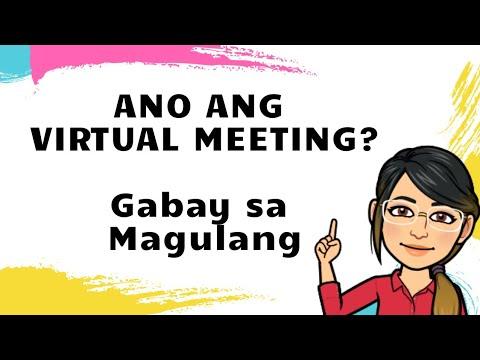
Virtual Meaning In Tagalog

Virtual Meaning in Tagalog: Definition, Usage & Examples
In today’s rapidly evolving digital age, the word virtual has become an everyday term in many languages, including Tagalog. Whether it’s virtual meetings, virtual reality, or virtual classrooms, understanding what “virtual” means is essential for Filipinos navigating the modern world. This article will explore the meaning of virtual in Tagalog, its practical applications, benefits, and examples to help you better understand this ubiquitous word.
What Does “Virtual” Mean in Tagalog?
The English word virtual is commonly translated to Tagalog as “di-tuwirang” or “halos,” which literally means “almost” or “not real/direct but simulated.” In many contexts, “virtual” conveys the idea of something existing in essence or effect but not physically tangible.
Other Tagalog translations or interpretations of “virtual” might include:
- Halos totoong – almost real
- Hindi pisikal – non-physical
- Pang-teknolohiya – technological/simulated environment
- Paraan sa online – method performed online or digitally
Summary Table: “Virtual” Translations in Tagalog
| English Term | Tagalog Translation | Literal Meaning | Typical Usage |
|---|---|---|---|
| Virtual | Di-tuwirang | Not direct/indirect | Virtual meeting, events |
| Virtual | Halos totoong | Almost real | Virtual reality, simulations |
| Virtual | Hindi pisikal | Non-physical | Virtual classrooms, spaces |
| Virtual | Online / Pang-teknolohiya | Online, technological | Virtual jobs, online services |
How Is “Virtual” Used in Everyday Filipino Contexts?
The concept of virtual is pervasive in many aspects of Filipino life, especially with the rise of technology and internet connectivity in the country. Here are some common contexts where “virtual” is frequently used:
1. Virtual Meetings (Mga Virtual na Pulong)
With remote working becoming more popular, many Filipinos attend virtual meetings or mga virtual na pulong using platforms like Zoom, Google Meet, or Microsoft Teams. These are meetings conducted online without physical presence.
2. Virtual Classrooms (Mga Virtual na Klase)
The education sector widely adopted virtual classrooms or mga virtual na klase during the COVID-19 pandemic. Students attend classes remotely via video calls and online platforms instead of traditional face-to-face learning.
3. Virtual Reality (VR) (Virtual na Realidad)
Virtual reality technology, known in Tagalog as virtual na realidad, refers to computer-generated environments where users can immerse themselves and simulate real-world experiences.
4. Virtual Assistance and Jobs (Virtual na Trabaho at Tulong)
Many Filipino freelancers and professionals work as virtual assistants or perform virtual jobs, which means they provide services remotely from anywhere.
Benefits of Virtual Systems and Concepts in the Philippines
Incorporating virtual technologies and concepts in work, education, and communication has reshaped lifestyles and economies. Here are some key advantages for Filipinos:
- Accessibility: Virtual platforms enable access to education and jobs for people in remote areas.
- Convenience: Attending virtual meetings or classes saves time and cost on travel.
- Flexibility: Virtual work offers flexible schedules, ideal for balancing family and career.
- Cost-effectiveness: Companies save on physical space and resources through virtual environments.
- Global Reach: Filipino professionals can work and collaborate internationally through virtual means.
Practical Tips for Using “Virtual” in Conversations and Writing
To sound natural and clear when using “virtual” in Tagalog conversations or content, consider the following tips:
- Use di-tuwirang when highlighting indirect or non-physical interactions.
- Employ halos totoong when referring to immersive or simulated experiences like virtual reality.
- When communicating online events, use virtual na pulong/klase to specify platform-based gatherings.
- Combine “virtual” with English terms commonly used in Filipino sentences for clarity (code-switching is common and accepted).
- Clarify context when necessary, since “virtual” can mean different things depending on the sector (education, work, entertainment).
Case Study: The Rise of Virtual Learning in the Philippines
During the height of the global pandemic, the Philippine education system shifted massively to virtual learning environments, exemplifying the tangible impact of virtual concepts on society.
Thousands of students attended mga virtual na klase, utilizing apps like Google Classroom, Zoom, and other LMS platforms. Despite challenges such as internet accessibility and device shortages, virtual learning opened new possibilities in education.
Teachers and students adapted to this new norm, learning how to maximize virtual tools and technology to continue education, showcasing that “virtual” is not just a concept but a vital practical reality.
Frequently Asked Questions (FAQs) About Virtual in Tagalog
- Q: How do you say “virtual reality” in Tagalog?
A: “Virtual reality” can be translated as virtual na realidad or artipisyal na realidad. - Q: Is “virtual” commonly used in everyday Filipino language?
A: Yes, especially in work, education, and technology sectors. - Q: Can “virtual” mean fake in Tagalog?
A: Not exactly. It implies simulation or non-physical presence rather than being false or fake.
Conclusion
Understanding the meaning of “virtual” in Tagalog unlocks a better comprehension of many modern concepts shaping Filipino lifestyle today. From virtual meetings to virtual reality and virtual classes, the term encompasses indirect, simulated, or technologically enabled experiences and activities.
As the Philippines continues to embrace digital transformation, learning the nuances of words like “virtual” in our native language empowers us to communicate effectively and engage confidently in the online world. Whether you are a student, worker, or casual user, appreciating the virtual realm in Tagalog broadens your outlook on the evolving digital landscape.






